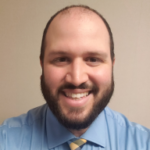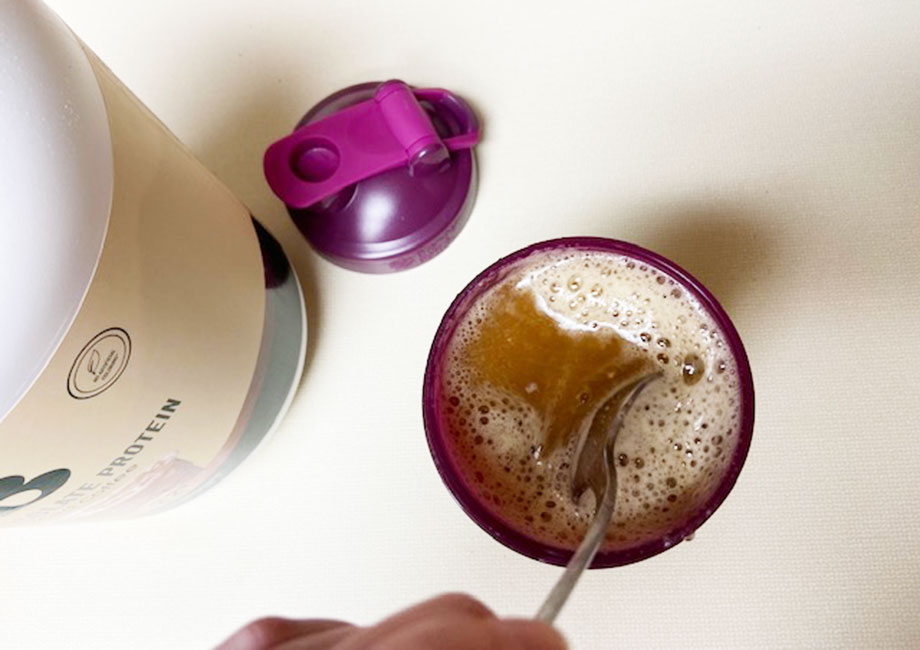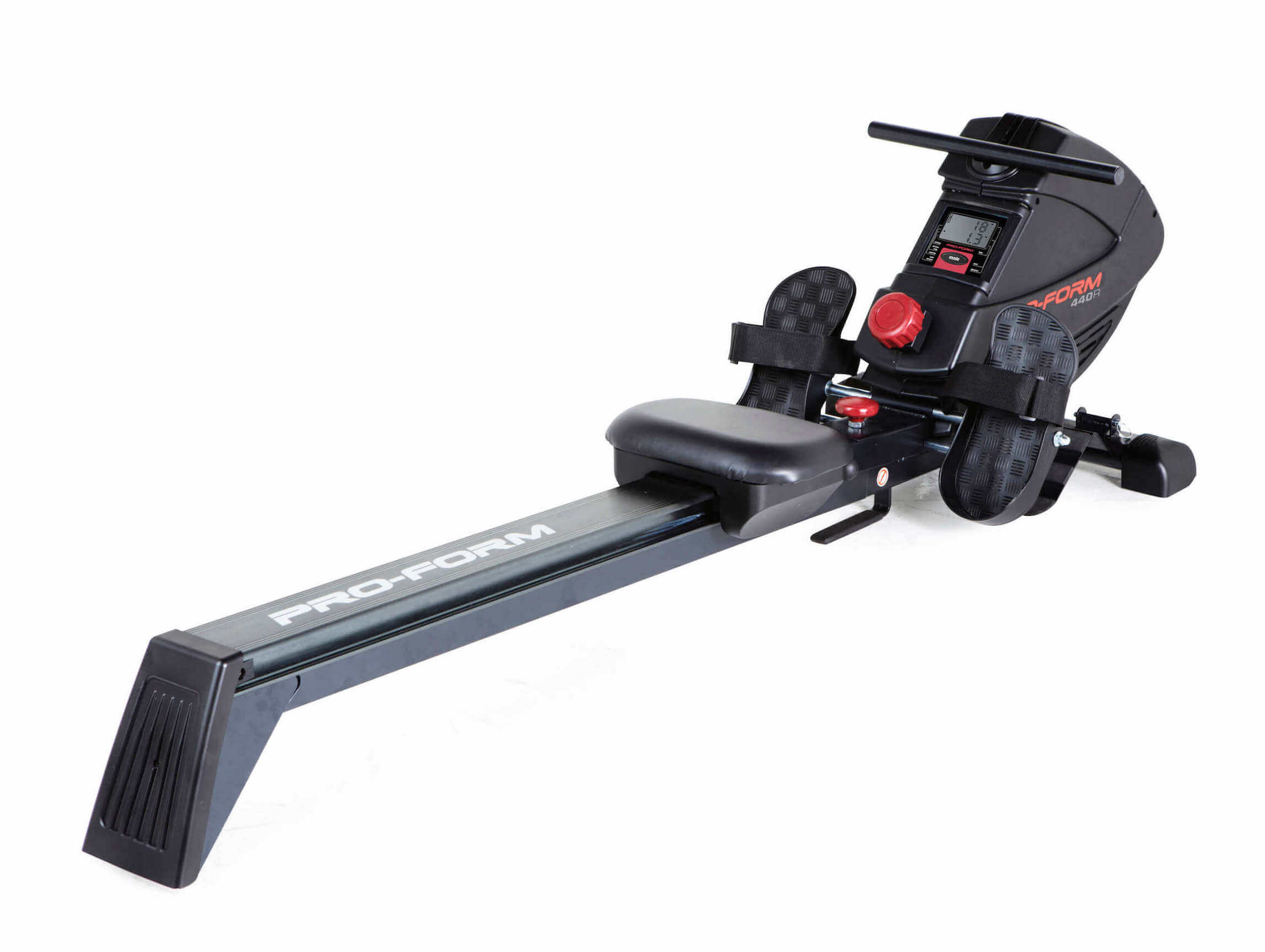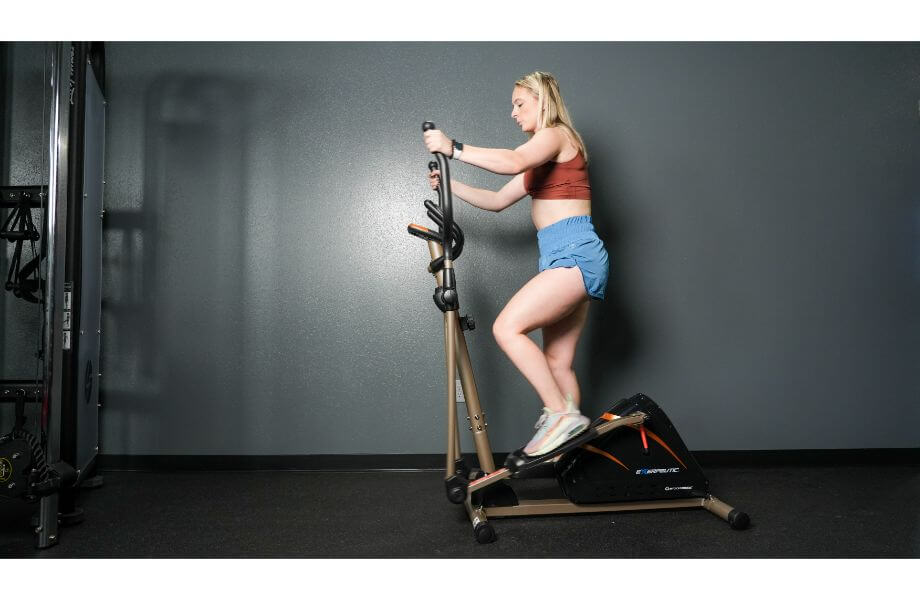The benefits of the hyperextension exercise are well-documented, but what if you pull a Missy Elliott and put your thing down, zip it, and reverse it?
While the regular hyperextension exercise involves securing your lower body using a hyperextension machine in order to work your back muscles, the reverse hyperextension involves securing your upper body to activate posterior chain muscles, including the glutes, hamstrings, and lower back.
It’s not the most common lower body exercise, but that doesn’t make it any less effective. GGR Head of Content Kate Meier, NASM-CPT, USAW-L1, CF-L1, gives us the scoop on this underrated movement.
How to Do the Reverse Hyperextension
Muscles worked: Glutes, hamstrings, erector spinae
How to do it:
- Lie prone on a hyperextension machine, glute-ham raise developer, bench, or stability ball with your legs dangling off the end. If using a machine that allows you to add weight, select your desired amount of weight and secure your feet using the machine’s footpads.
- Use your hips and hamstrings to raise your legs behind you, keeping them straight.
- Continue lifting until your legs are above your hips, squeezing your glutes and hamstrings.
- Hold the position briefly, then slowly lower your legs back to the starting position.
- Repeat for reps or duration.
RELATED: Best Glute Machines

Trainer Tips for Form
Are you ready to give this underutilized gem of an exercise a try? Keep these tips in mind to make sure your form is on point.
Perfect Your Starting Position
When you get into position, you’re going to be using your legs and lower back muscles to do the work, but let’s not get ahead of ourselves here! It all starts with getting into the proper position.
The ideal starting position is characterized by:
- Head: Neutral neck alignment, so you should be looking at the floor
- Arms: Elbows fully extended; if you’re bending them, the handles are too close
- Core: Braced so it’s nice and tight
- Legs: Hanging off the end of the machine so you can move them freely
“Also, try not to be too high on the machine or bench,” says Kate Meier, NASM-CPT, USAW-L1, CF-L1. “We want some involvement from the lower back, but being too high turns the movement into a strict hinge movement at the waist. That’s good for improving your deadlift or RDL mechanics, but it’s not what we’re looking for when programming the reverse hyperextension.”
Slow and Steady
“Ideally, you want to engage your core and contract your target muscles—the glutes, hamstrings, and lower back—to get the most activation and reap the most benefit,” says Kate.
If you’re relying on your other surrounding muscles to get going or you’re using momentum to perform the movement, you’ll wind up cheating yourself out of muscle activation. Instead, heed the advice of the old adage, “Slow and steady wins the race.”
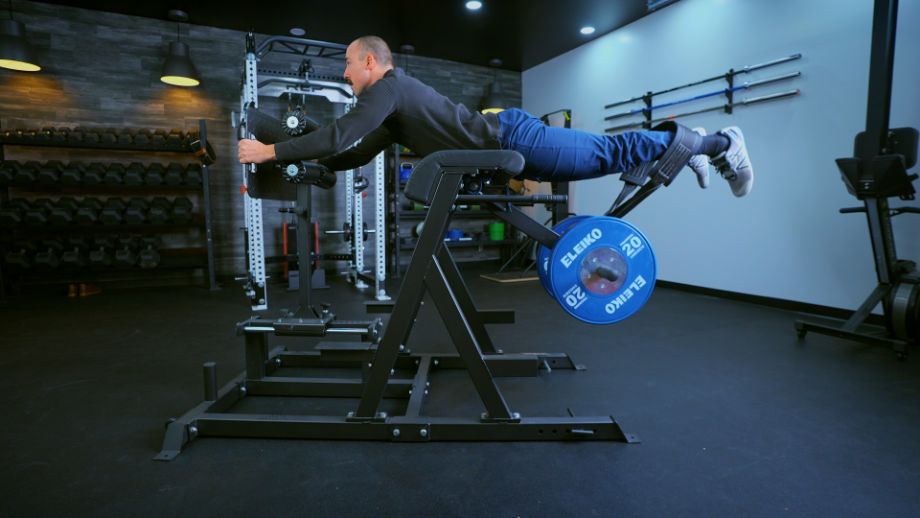
Slow, controlled reps maximizing time under tension (TUT) are your best bet for building bigger, stronger posterior chain muscles, and that’s exactly what you want from this exercise.
Mind the ROM
We all know that a larger range of motion (ROM) means more time under tension and, as a result, more work performed per rep. Bigger is better, right?
“For the reverse hyperextension, that’s not true,” explains Kate. “Lifting your legs too high activates the lower back to a greater degree and places stress on it. You want some involvement from the spinal erectors, but the primary target muscles will be the glutes and hamstrings.”
Reverse Hyperextension Benefits
Most people have never heard of the reverse hyperextension or seen them performed in the gym, so why is it worth dredging up now? Well, the multitude of benefits, of course.
Increased Posterior Chain Strength
The reverse hyperextension exercise targets and activates posterior chain muscles like nobody’s business, which in and of itself yields various benefits for champion athletes and everyday folks alike.
Athletes will appreciate how a stronger posterior chain contributes to a more explosive hip extension. Which translates to better deadlifts, squats, sprints, and sport-specific movements, helping competitive athletes level up their game.
RELATED: How To Deadlift
On the other hand, everyday folks will just be happy to use these important muscles—specifically the glutes, hamstrings, and lower back—to complete daily activities with less effort and minimal pain.
Lower Back Pain Relief and Injury Prevention
Speaking of pain, adding exercises like the reverse hyperextension to your strength training routine will reinforce the muscles responsible for maintaining good posture and possibly provide an analgesic effect on lower back pain.
With low back pain remaining the leading cause of global disability1, it’s very important to make full use of exercises that help address and prevent its recurrence.
Strengthening the posterior chain muscles may also reduce your risk of back injury. According to a 2022 study published in Human Factors2, adopting an exercise regimen that uses lumbar extension exercises, such as the reverse hyperextension, may help relieve chronic low back pain and possibly “prevent low back pain (LBP) problems,” too.
Improved Hip Mobility
The movement pattern employed by the reverse hyperextension exercise encourages hip mobility, helping flexibility and stability.

RELATED: Hip Flexor Exercises
“That increased mobility transcends just hip health and translates to greater joint health for your lower body all around,” says Kate. “The knees and ankles won’t have to pick up as much slack as they would if you were plagued by poor hip mobility or operating with a reduced range of motion at the hips.”
Who Should Do the Reverse Hyperextension?
Remember—we’re fitness inclusive folks at GGR, so given the attractive benefits listed above, there’s good reason for anybody and everybody to try out the reverse hyperextension exercise.
Here’s a brief overview of a few select types of people who may benefit most from incorporating this incredible hamstring and glute exercise into their routine.
Strength Athletes
We’re looking at you, powerlifters, strongmen, and Olympic weightlifters. Strong posterior chain muscles means you’ll have a stable trunk and lower body while managing heavy weights and lifts, including the barbell back squat, deadlift, and strongman carries.
RELATED: Powerlifting Workout
Plus, a powerful posterior chain promotes a commensurately powerful hip extension, which makes movements that involve an explosive hip extension a pinch.
So, whether you’re an Olympic weightlifter, like GGR’s own senior staff writer Caine Wilkes or just an everyday CrossFit enthusiast, incorporating the reverse hyperextension will help you make headway on your goals.
Runners and Sprinters
Cross country and endurance runners may balk at the notion of building a strong posterior chain for the purposes of developing power, but sprinters and other athletes who feel the need for speed will be seriously smitten with the improved propulsion made possible by putting in the work to build strong glutes and hammies.
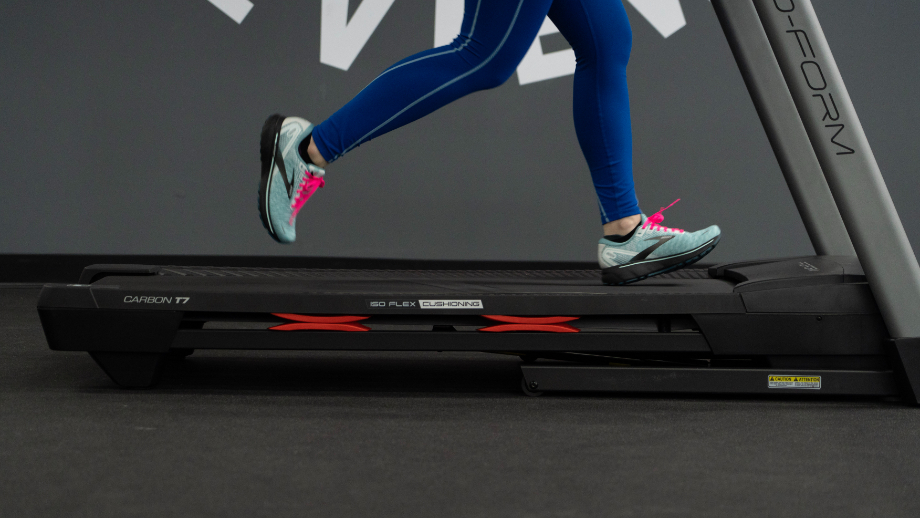
Exercises like the reverse hyperextension are integral for that goal, making it indispensable for runners looking to add some accessory work to their fitness routine.
Those Medically Contraindicated from Hinge Lifts
The deadlift is considered one of the best back exercises, helping build superior back strength and muscle. Some individuals, however, may be physically unable or medically contraindicated (unable to) from performing the deadlift and similar exercises that involve hinging at the hips due to the intense demand it places on the body.
“That’s where an exercise like the reverse hyperextension shines,” says Kate. “It targets similar muscle groups but places significantly less stress on the body, so you can strengthen these areas without risking your health.”
Weightlifting and exercise should be physically challenging, but you should never fight through pain. If you’re experiencing pain or discomfort during exercise, consult your doctor or other qualified medical professional for a diagnosis and recommendations.
How to Program the Reverse Hyperextension
The reverse hyperextension is a great exercise for building posterior chain strength, muscle, or endurance based on how you approach your training session.

If you’re using an actual reverse hyperextension machine, you’ll be able to add weight and increase resistance, opening up a realm of possibilities.
- For strength: Shoot for 3-4 sets of 8-10 reps using heavy weight
- For muscle: Complete 3-4 sets of 12-15 reps using medium weight
- For endurance: Do 2-4 sets of 15-20 reps using bodyweight only
RELATED: How To Do Back Extensions At Home
Many lifters have a general feel for what’s heavy on regular lifts, but the reverse hyperextension is sort of an anomaly because of its unique positioning. For that reason, we use the barbell back squat as a baseline.
- For strength: Approximately 50% of your 1RM back squat
- For muscle: Approximately 25% of your 1RM back squat
“When in doubt, start light and scale as you go,” Kate Meier, NASM-CPT, USAW-L1, CF-L1 recommends. “It’s always better to play it safe than to wind up injured because you pushed too hard in the beginning.”
RELATED: How Many Reps To Build Muscle
Common Reverse Hyperextension Mistakes
The reverse hyperextension isn’t an overly complex movement, but you don’t have to be a beginner to make a mistake. Here are a few common blunders to look out for.
Going Too Heavy
Biting off more than you could chew is certainly not exclusive to the reverse hyperextension, but it’s a common mistake that should be avoided nonetheless.
Not only does endeavoring to lift weight beyond your abilities put you in danger of an injury, but it compromises your form, too. So, even if you don’t get hurt, you’re more likely to perform sloppy reps that fail to give you the results you’re looking for.
Using Momentum or Gravity
The idea here is to hold tension in the glutes, hamstrings, and lower back as you move through the exercise’s range of motion. Holding that contraction is what builds strength and stability in the target regions.
You’ll reduce the impact of the contraction if you initiate each rep with a powerful thrust and then allow momentum to take over halfway through the rep. Letting your legs fall from the peak position back down to the starting position is equally egregious.
“Don’t let gravity do the work!” says Kate. “Resist it and bring your legs back down slowly to the starting position to get the most benefit from each rep.”
RELATED: DIY Reverse Hyper Machine for Under $100
Reverse Hyperextension Variations and Alternatives
Switching things up every now and then is about more than just providing a varied stimulus to your target muscles; it staves off training boredom, too! Here are a few variations and alternatives to the reverse hyperextension exercise.
Bodyweight Reverse Hyperextension
Why do it: “Sticking to just your own bodyweight during the reverse hyperextension holds a few benefits,” says Kate Meier, NASM-CPT, USAW-L1, CF-L1. “Using only your bodyweight lets you hone in and perfect your form. It also lets you get in more reps, which promotes improved muscular endurance.”
How to do it:
- Get into your reverse hyperextension starting position on a machine or bench.
- Squeeze your glutes and hamstrings to raise your legs behind you, keeping them straight.
- Continue until they are lifted above your hips.
- Hold briefly, then slowly lower your legs back down.
- Repeat for reps or duration.
RELATED: Bodyweight Exercises
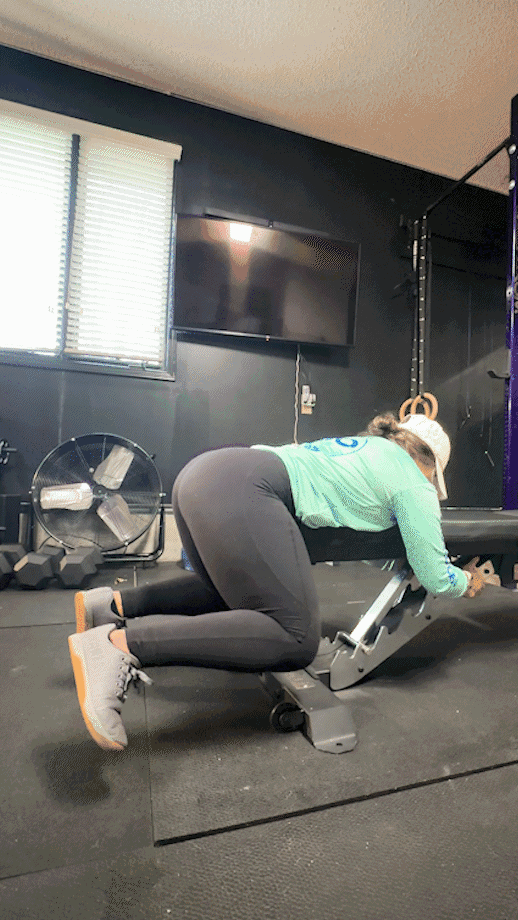
Reverse Hyperextension Isometric Hold
Why do it: According to Healthcare (Basel)3, “isometric training increases strength and the muscles’ ability to produce power.” It’s vastly different from standard isotonic exercises, so it’s good to work into your routine to give your muscles a different stimulus.
How to do it:
- Get into your reverse hyperextension starting position on a machine or bench.
- Squeeze your glutes and hamstrings to raise your legs behind you, keeping them straight.
- Continue until they are lifted above your hips.
- Hold the position for the desired duration, then release.

Good Morning
Why do it: The good morning exercise targets the same trio of posterior chain muscles as the reverse hyperextension, except it’s a slightly more versatile exercise since it can be performed using a barbell, dumbbells, or even a resistance band.
How to do it:
- Unrack a loaded barbell onto your shoulders as though you’re about to back squat.
- Stand with your feet shoulder-width apart and your knees slightly bent.
- Bring your hips back and your chest down towards the floor.
- Continue lowering your chest until it is nearly parallel with the floor.
- Pause, then reverse the movement to stand back up.
- Repeat for reps.
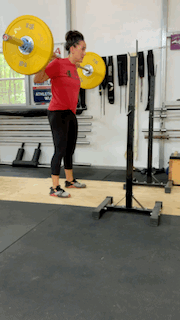
Barbell Hip Thrust
Why do it: According to the Journal of Sports Science & Medicine4, you’ll get some of the best activation in the gluteus maximus from the barbell hip thrust. So, it makes a good substitute for the reverse hyperextension, but it can be used in combination, too.
How to do it:
- Sit with your back against a flat weight bench and a loaded barbell at your feet.
- Roll the barbell over your legs and into your hip crease.
- Plant both feet into the floor, bend your knees, and thrust your hips into the air.
- Squeeze your glutes at the top, then slowly return to the starting position.
- Repeat for reps.
RELATED: Hip Thrust Workout
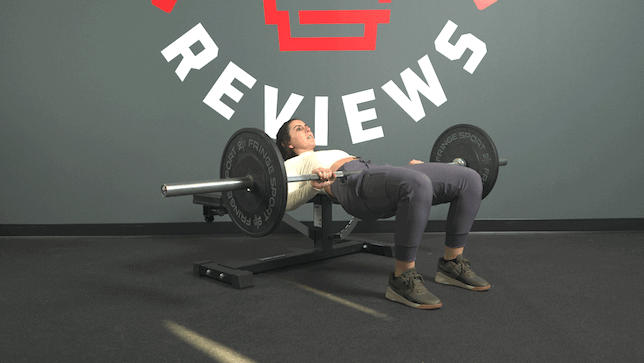
Glute Ham Raise
Why do it: The glute-ham raise (or GHR), as the name suggests, works your glutes and hamstrings, two of the essential muscles involved in the reverse hyperextension. So, like the hip thrust, it’s a great move to do alongside the reverse hyperextension or as a substitute.
How to do it:
- Adjust your GHD machine, slide your feet in, and bend your knees so you are essentially kneeling atop the machine with your chest tall, core tight, and quads resting on the pads.
- Lower your torso towards the floor by extending your knees slowly.
- Continue until you’re parallel with the floor, then contact the glutes and hamstrings to return to the starting position.
- Repeat for reps.
RELATED: Best Glute Machines
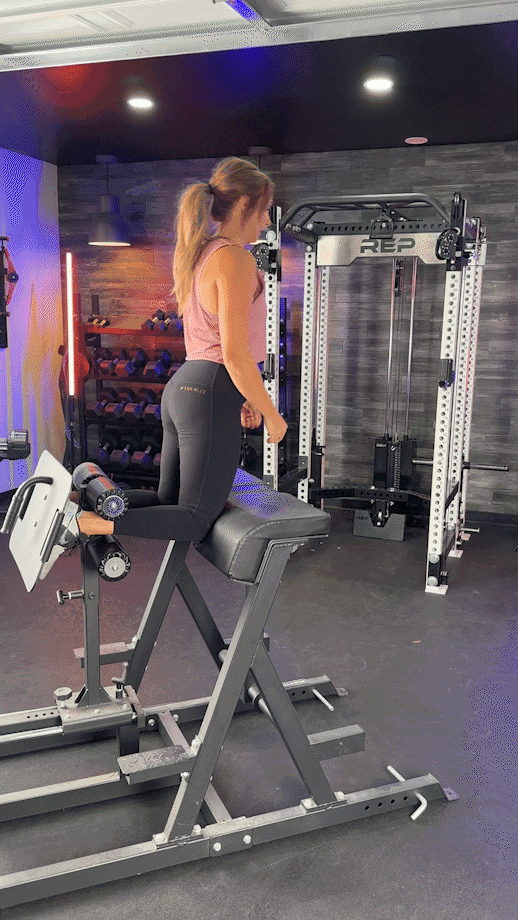
Reverse Hyperextension: FAQs
Is reverse hyperextension better than back extension?
According to a 2019 study5 in the Journal of Strength and Conditioning Research, the reverse hyperextension requires less lumbar flexion, making it “preferable because it provides greater hip ROM with less angular stress and equivalent erector spinae activity.”
A 2021 study6 also in the Journal of Strength and Conditioning Research made similar observations, stating, “the [reverse hyperextension] could be considered as a higher-intensity exercise for the posterior chain muscles compared with the [hyperextension], potentially eliciting greater increases in strength of the posterior chain muscles.”
So, in this regard, yes, it’s better than the back extension.
Is reverse hyperextension safe?
Posterior chain exercises like the deadlift and good morning are notorious for aggravating existing lower back pain and conditions that produce low back pain. Fortunately, the reverse hyperextension doesn’t produce that same effect, making it potentially safer than these other tried-and-true lower back exercises.
When should hyperextension be avoided?
Mild low back pain may be remedied by strengthening the posterior chain muscles, but some conditions and injuries may render you medically contraindicated from doing hyperextension exercises. Always consult your doctor if you’re unsure.
References
1. Low Back Pain. World Health Organization. Accessed January 26, 2024. https://www.who.int/news-room/fact-sheets/detail/low-back-pain.
2. Saiklang P, Puntumetakul R, Selfe J, Yeowell G. An Evaluation of an Innovative Exercise to Relieve Chronic Low Back Pain in Sedentary Workers. Hum Factors. 2022;64(5):820-834. doi:10.1177/0018720820966082
3. Widodo AF, Tien CW, Chen CW, Lai SC. Isotonic and Isometric Exercise Interventions Improve the Hamstring Muscles’ Strength and Flexibility: A Narrative Review. Healthcare (Basel). 2022;10(5):811. Published 2022 Apr 27. doi:10.3390/healthcare10050811
4. Neto WK, Soares EG, Vieira TL, et al. Gluteus Maximus Activation during Common Strength and Hypertrophy Exercises: A Systematic Review. J Sports Sci Med. 2020;19(1):195-203. Published 2020 Feb 24.
5. Lawrence MA, Chin A, Swanson BT. Biomechanical Comparison of the Reverse Hyperextension Machine and the Hyperextension Exercise. J Strength Cond Res. 2019;33(8):2053-2056. doi:10.1519/JSC.0000000000003146
6. Cuthbert M, Ripley NJ, Suchomel TJ, Alejo R, McMahon JJ, Comfort P. Electromyographical Differences Between the Hyperextension and Reverse-Hyperextension. J Strength Cond Res. 2021;35(6):1477-1483. doi:10.1519/JSC.0000000000004049

